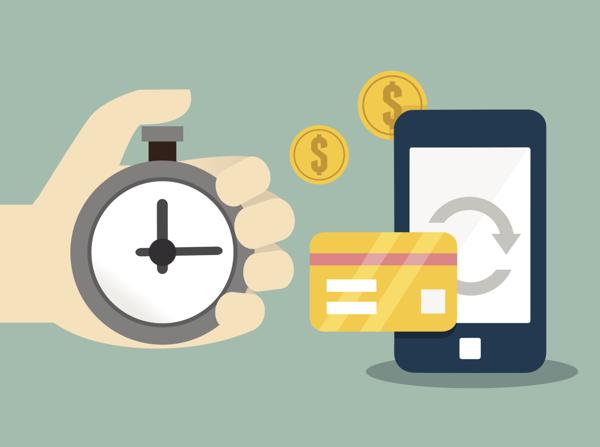
The internet is no more a novelty. No work seems possible without the help of the World Wide Web, within the domestic confines or your workplace. The growing popularity of the internet and myriad online services has eased out a majority of tasks in our personal and professional lives.
One of the principal innovations of the internet has been the feasibility of online cash transactions. To elaborate, traditional banking/shopping methods have been replaced by online methods. This has facilitated an enormous change in regular life, mostly for the better. However, there are always two sides to a coin, and online banking has a few negatives associated with it as well. The paragraphs below elaborate on the pros and cons of online banking services.
The Concept of Online Banking
☞ In a nutshell, online banking offers similar facilities to traditional banking, sans the time and location.
☞ With online banking, you can transfer money between accounts, pay bills, pay for shopping, and perform myriad other facilities.
☞ You will require an online banking account and account number (similar to your checking account in a regular bank). Along with this, you will have your unique user ID and online password. This provides you an entry into your account.
☞ Assume that you have to conduct a simple transaction, say a cash transfer.
☞ To do so, first, login to your account. Here is where you can view a record of all your previous transactions, your account balance, new features, etc.
☞ You will find an option to transfer cash. You will be asked for a choice of transfer, i.e, if you want to transfer money to another American account of your own, or some other person’s American account, or to a business account, or an account outside the country, etc.
☞ When you choose your option and enter the amount and other details, your account balance is checked, and if there is a shortage of cash, you are promptly notified.
☞ If not, your request is processed by the server through an SSL connection, and the database of the banking system is updated accordingly.
☞ The transaction is done immediately, and you receive the notification immediately.
☞ After transfer, you can check the other account for verification and then log out.
Advantages of Online Banking
Fast Transactions
☞ As already mentioned before, online systems are rapidly quick.
☞ You do not have to wait in a long line or run along from pillar to post to get your job done.
☞ Anything that needs to be done can be done quickly and easily. For instance, let’s say the day’s agenda is to pay bills, transfer cash, and deposit cash.
☞ Without online systems, these tasks may take you more than 4 to 5 hours. With online banking, the same tasks will require a maximum of an hour.
Easy Access
☞ You can easily access and monitor your accounts.
☞ You can monitor your cash flow and other transactions and stay abreast of the latest techniques with a mere click of a button.
☞ The rates offered in online banking systems are much more convenient and friendly.
☞ Since there are virtually no overhead costs, you are offered low rates of interest on loans and higher rates of interest on savings accounts.
Security
☞ Online accounts are always protected with special encryption software.
☞ As the transactions involve a huge amount of money, the designers of the banking software make sure that complete protection is given to the system.
☞ Passwords are protected by virtual keyboard, digital signature is involved, periodic notifications are added, beside many other protection mechanisms.
☞ As a customer, we should ensure that the bank’s website has a valid security certificate (to be insured by the FDIC.)
Time and Location Constraint
☞ This is one of the most obvious and best advantages of online banking.
☞ With traditional banks, you must have gone through the woes of ‘Oh, it’s a Sunday, I cannot go to the bank’ or ‘It’s past 6 in the evening, the bank must have closed for the day’ often.
☞ With online banking, you can happily bid these woes goodbye, since they are available 24X7, 365 days in a year.
☞ And, there is no location constraint as well. You do not have a physical structure as the bank, your bank is available right where you need it – yes, in your hands.
☞ Online banking is available on mobile applications and tablets as well, making it all the more convenient and easy to use.
Online Features
☞ Though traditional banks also offer many features, the frequency and variety is considerably more with online services.
☞ Moreover, you are easily updated with the latest offers, as opposed to traditional banks.
☞ Many online services offer different types of certificates of deposit (CDs) and low rates on mortgages.
☞ Some banks offer services of opening accounts with a mandatory deposit limit or fees.
☞ Some other banks may offer financial planning tools, and other investment platforms.
Disadvantages of Online Banking
Security
☞ While bank accounts are mostly protected, this security may or may not be completely reliable or permanent.
☞ This is a major weakness of online systems; they are always vulnerable to fraud, despite excellent security.
☞ If your account is not protected, it is likely to be infiltrated upon and stolen.
☞ Most banks use intelligent encryption software and firewall protection; yet, cyber criminals are not reliable and may devise new strategies to hack bank accounts.
Online Features and Transactions
☞ While most transactions are easy to handle, some may require a direct communication or meetings, instead of an online portal. This is not available with online banking.
☞ Also, not all features may be available with all banks – the interest rates and offers may differ.
☞ Though most transactions are quick, some banks may have exceptionally outdated software that leads to slow transfer – so much so, that you may prefer traditional banking.
Location
☞ While location is a positive factor in the scenario when you need quick access to your account, it is problematic when you need a physical structure to resolve your queries.
☞ Undoubtedly, all the online services have the FAQ section as well as sufficiently long brochures to explain everything; yet, the absence of actually having to go to a building and conduct a transaction is sorely missed, in case of certain transactions.
☞ With banks that have no physical location, you miss out on the benefit of actually going and checking out your account and depending only on the online portal.
Customer Service
☞ One of the primary advantages of traditional banks was the direct, face-to-face communication with people working in customer service.
☞ This kind of service led to a working, healthy relationship between a bank and its clients.
Online systems do not have a direct communication media; they have a lot of customized web pages that solve client queries.
☞ Though this is helpful, it lacks the old-fashioned touch, which may be frustrating at times
☞ With traditional banks, the banker knows you as a regular customer, he is aware of your transactional history and the way your mind works. With online banks, you are a just a number – among the several thousands that exist.
☞ However convenient the online system is, the lack of personal touch may be uncomfortable for many.
















